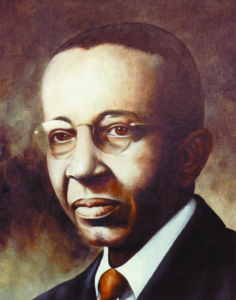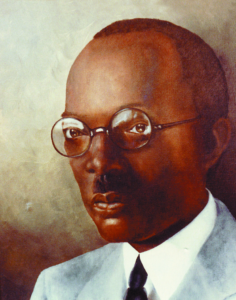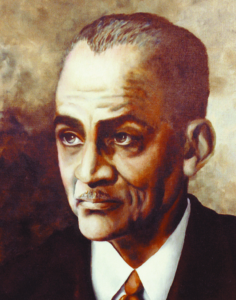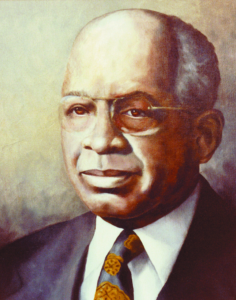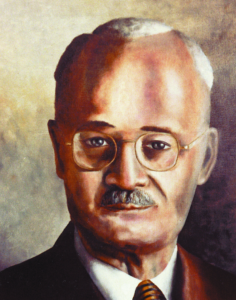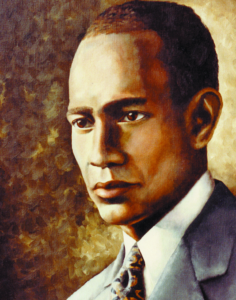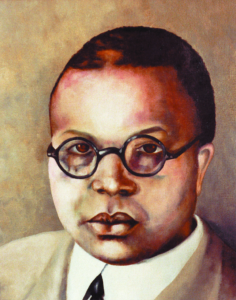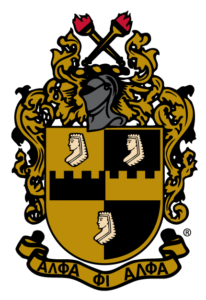THE FOUNDING OF ALPHA PHI ALPHA™
Alpha Phi Alpha™, the first intercollegiate Greek-letter fraternity established for African American Men, was founded on December 4, 1906™ at Cornell University in Ithaca, New York by seven college men who recognized the need for a strong bond of brotherhood among African descendants in this country.
The fraternity initially served as a study and support group for minority students who faced racial prejudice, both educationally and socially, at Cornell. The Jewel founders and early leaders of the fraternity succeeded in laying a firm foundation for Alpha Phi Alpha’s principles of scholarship, fellowship, good character, and the uplifting of humanity.
Alpha Phi Alpha chapters were established at other colleges and universities, many of them historically black institutions, soon after the founding at Cornell. The first alumni chapter was established in 1911. While continuing to stress academic excellence among its members, Alpha also recognized the need to help correct the educational, economic, political, and social injustices faced by African Americans. Alpha Phi Alpha has long stood at the forefront of the African-American community’s fight for civil rights through leaders such as W.E.B. DuBois, Adam Clayton Powell, Jr., Edward Brooke, Martin Luther King, Jr., Thurgood Marshall, Andrew Young, William Gray, Paul Robeson, and many others. True to its form as the “first of firsts,” Alpha Phi Alpha has been interracial since 1945.
Since its founding on December 4, 1906™, Alpha Phi Alpha Fraternity, Inc. has supplied voice and vision to the struggle of African Americans and people of color around the world.
OUR JEWELS
The seven visionary founders, known as the “Jewels” of the fraternity, are Henry Arthur Callis, Charles Henry Chapman, Eugene Kinckle Jones, George Biddle Kelley, Nathaniel Allison Murray, Robert Harold Ogle, and Vertner Woodson Tandy.
HENRY ARTHUR CALLIS
1887-1974
Callis became a practicing physician, Howard University Professor of Medicine and prolific contributor to medical journals.
Often regarded as the “philosopher of the founders” and a moving force in the Fraternity’s development, he was the only one of the “Cornell Seven” to become general president. Prior to moving to Washington, D.C., he was a medical consultant to the Veterans Hospital in Tuskegee, Alabama.
Upon his death in 1974, at age 87, the fraternity entered a time without any living Jewels. His papers were donated to Howard’s Moorland-Spingarn Research Center.
CHARLES HENRY CHAPMAN
1870-1934
Callis became a practicing physician, Howard University Professor of Medicine and prolific contributor to medical journals.
Often regarded as the “philosopher of the founders” and a moving force in the Fraternity’s development, he was the only one of the “Cornell Seven” to become general president. Prior to moving to Washington, D.C., he was a medical consultant to the Veterans Hospital in Tuskegee, Alabama.
Upon his death in 1974, at age 87, the fraternity entered a time without any living Jewels. His papers were donated to Howard’s Moorland-Spingarn Research Center.
EUGENE KINCKLE JONES
1885-1954
Callis became a practicing physician, Howard University Professor of Medicine and prolific contributor to medical journals.
Often regarded as the “philosopher of the founders” and a moving force in the Fraternity’s development, he was the only one of the “Cornell Seven” to become general president. Prior to moving to Washington, D.C., he was a medical consultant to the Veterans Hospital in Tuskegee, Alabama.
Upon his death in 1974, at age 87, the fraternity entered a time without any living Jewels. His papers were donated to Howard’s Moorland-Spingarn Research Center.
GEORGE BIDDLE KELLEY
1884-1962
Callis became a practicing physician, Howard University Professor of Medicine and prolific contributor to medical journals.
Often regarded as the “philosopher of the founders” and a moving force in the Fraternity’s development, he was the only one of the “Cornell Seven” to become general president. Prior to moving to Washington, D.C., he was a medical consultant to the Veterans Hospital in Tuskegee, Alabama.
Upon his death in 1974, at age 87, the fraternity entered a time without any living Jewels. His papers were donated to Howard’s Moorland-Spingarn Research Center.
NATHANIEL ALLISON MURRAY
1884-1959
Callis became a practicing physician, Howard University Professor of Medicine and prolific contributor to medical journals.
Often regarded as the “philosopher of the founders” and a moving force in the Fraternity’s development, he was the only one of the “Cornell Seven” to become general president. Prior to moving to Washington, D.C., he was a medical consultant to the Veterans Hospital in Tuskegee, Alabama.
Upon his death in 1974, at age 87, the fraternity entered a time without any living Jewels. His papers were donated to Howard’s Moorland-Spingarn Research Center.
ROBERT HAROLD OGLE
1886-1936
Callis became a practicing physician, Howard University Professor of Medicine and prolific contributor to medical journals.
Often regarded as the “philosopher of the founders” and a moving force in the Fraternity’s development, he was the only one of the “Cornell Seven” to become general president. Prior to moving to Washington, D.C., he was a medical consultant to the Veterans Hospital in Tuskegee, Alabama.
Upon his death in 1974, at age 87, the fraternity entered a time without any living Jewels. His papers were donated to Howard’s Moorland-Spingarn Research Center.
VERTNER WOODSON TANDY
1885-1949
Callis became a practicing physician, Howard University Professor of Medicine and prolific contributor to medical journals.
Often regarded as the “philosopher of the founders” and a moving force in the Fraternity’s development, he was the only one of the “Cornell Seven” to become general president. Prior to moving to Washington, D.C., he was a medical consultant to the Veterans Hospital in Tuskegee, Alabama.
Upon his death in 1974, at age 87, the fraternity entered a time without any living Jewels. His papers were donated to Howard’s Moorland-Spingarn Research Center.

